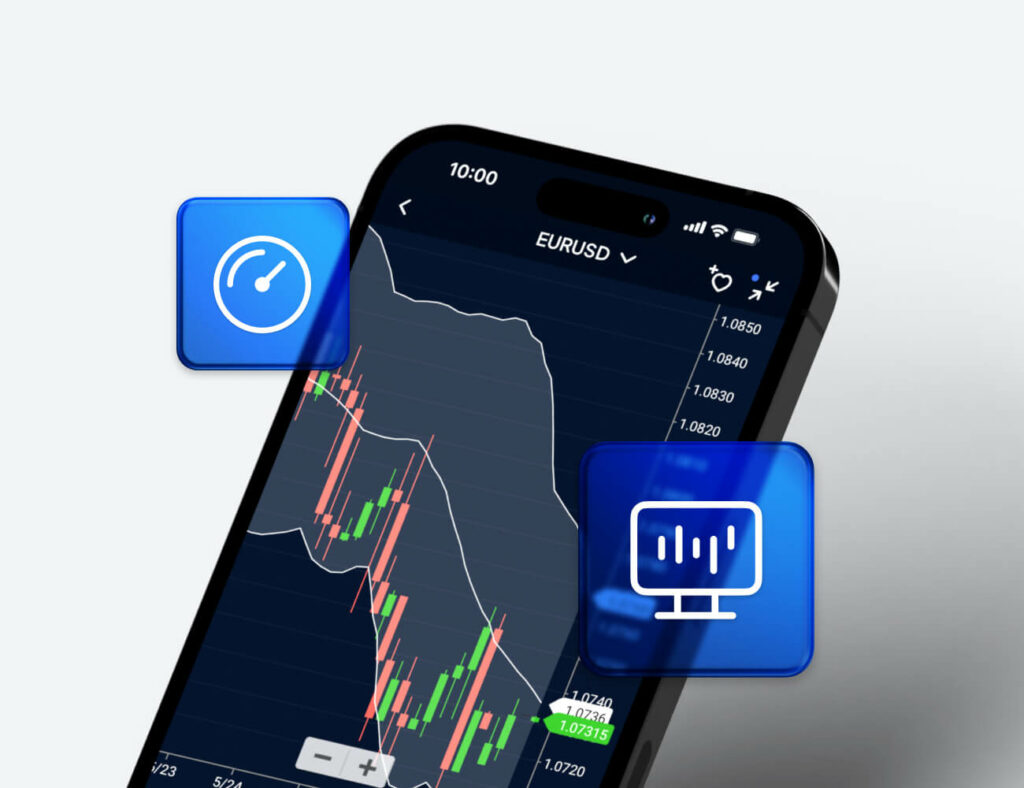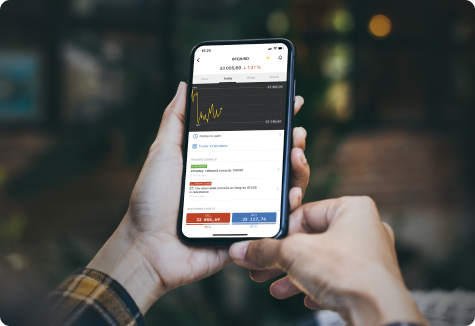How Copy Trading Platforms Operate
Copy trading platforms link investors with professional traders through specialized software. When a selected trader opens, modifies, or closes a position, the same action is automatically executed on the follower’s account in proportion to their investment. The process relies on synchronization between the accounts, achieved through advanced trading systems integrated into MetaTrader 4 (MT4), MetaTrader 5 (MT5), or proprietary web platforms.
Each trader’s performance metrics—profit percentage, drawdown, and trading history—are displayed for transparency. Investors can decide how much capital to allocate to each trader and can stop copying or adjust allocation at any time. Commissions or performance fees are usually charged by the trader or platform, depending on results.
Example of how trade replication works:
| Trader Action | Investor’s Account Reaction | Description |
| Opens EUR/USD buy | Same position opens automatically | System mirrors trade in real-time |
| Closes GBP/JPY | Position closes on investor account | Synchronization ensures identical timing |
| Changes stop-loss | Investor’s stop-loss adjusts | Risk management remains consistent |
Modern copy trading services also allow manual interference, meaning users can close positions early or change trade size if they wish. This feature helps maintain control without losing the automation advantage.
Key Features to Consider Before Choosing a Platform
Before joining any service, traders should assess several factors that determine efficiency, transparency, and long-term reliability. Below are the main characteristics worth evaluating.
- Regulation and Security: Choose platforms operating under reputable regulators such as FCA, CySEC, or ASIC. Regulation ensures proper fund segregation and operational integrity.
- Trading Costs: Pay attention to spreads, commissions, and withdrawal fees. Even small charges can significantly influence results over time.
- Trader Performance Data: Reliable platforms offer in-depth analytics of each provider’s historical data, including monthly returns and risk levels.
- Execution Speed: Fast order execution prevents slippage and price delays during volatile market conditions.
- Compatibility: The ability to connect accounts with MT4, MT5, or mobile apps allows flexibility across devices.
- Community and Transparency: Access to public ratings, feedback, and trader statistics supports better decision-making.

Comparison of platform essentials:
| Criteria | Importance Level | Why It Matters |
| Regulation | High | Protects funds and ensures compliance |
| Cost Transparency | High | Avoids hidden trading expenses |
| Historical Performance | Medium | Helps evaluate trader reliability |
| User Interface | Medium | Simplifies monitoring and execution |
| Execution Speed | High | Prevents missed market opportunities |
Selecting a platform without evaluating these points often leads to poor results or unexpected risks. A balanced approach that considers both cost and safety typically produces the most consistent outcomes.
Top Copy Trading Platforms for 2025
The market continues to expand with innovative services offering different types of automation, transparency, and customization. The following list highlights platforms known for efficiency, regulation, and usability across multiple instruments.
| Commision | Instruments | Min Dep | Leverage | Platforms | ||
|---|---|---|---|---|---|---|
| From $5 per lot | Forex Commodities Indices Crypto | $100 | Up to 1:400 | AvaTradeGo MT4 MT5 | ||
| No commission, spreads from 0.1 pips | Forex Commodities Indices Crypto | $10 | Up to 1:2000 | MT4 MT5 | ||
| From 0.0 pips (ECN) | Forex Crypto Indices | $100 | 1:500 | MT4 MT5 cTrader | ||
| No commission, spreads from 0.0 pips | Forex Commodities Indices Crypto | $200 | Up to 1:500 | MT4 MT5 cTrader | ||
| No commission, spreads from 0.6 pips | Forex Commodities Indices Crypto | $25 | Up to 1:500 | MT4 MT5 OctaTrader |
AvaTrade
AvaTrade
AvaTrade offers an integrated copy trading service through AvaSocial and third-party tools such as DupliTrade and ZuluTrade. The platform emphasizes regulated trading with licenses in multiple jurisdictions. Investors can copy seasoned traders while using robust risk control options such as trade size limits and capital protection settings. AvaTrade also supports MT4 and MT5, ensuring compatibility for users who prefer traditional trading systems.
FXTM
FXTM
FXTM’s copy trading system, known as FXTM Invest, provides access to a list of “Strategy Managers” ranked by performance. The platform enables users to filter traders by risk level, profit factor, and number of followers. Performance fees are only paid when the selected trader generates returns. The dashboard is straightforward, giving clear visibility into positions, results, and historical charts.
FP Markets
FP Markets
FP Markets delivers copy trading through both MetaTrader Signals and its proprietary FP Markets Social Trading app. Regulated by ASIC and CySEC, it offers a high level of fund security and transparency. The platform allows users to automatically mirror professional traders’ strategies across forex, indices, and commodities. Investors can track detailed performance metrics, including drawdowns, win rates, and average returns, before committing capital. FP Markets also features competitive spreads, rapid execution, and integration with MT4 and MT5 for seamless strategy management.
Pepperstone
Pepperstone
Pepperstone collaborates with multiple copy trading providers such as Myfxbook AutoTrade, DupliTrade, and MetaTrader Signals. The platform’s strength lies in execution speed, low spreads, and tight regulation under ASIC and FCA. Pepperstone offers flexibility for both manual and automated strategies, making it suitable for traders seeking institutional-grade conditions with social trading functionality.
Octa
Octa
Octa, formerly known as OctaFX, offers a well-developed copy trading system integrated into its proprietary Octa Copytrading platform. Regulated and recognized globally, Octa enables investors to automatically replicate trades from professional traders in forex, indices, and commodities markets. The platform stands out for its user-friendly mobile and web interface, transparent statistics, and flexible investment options. Each Master Trader’s profile includes performance indicators such as total profit, risk score, and trading duration, allowing users to make informed decisions. With tight spreads, instant execution, and no hidden commissions, Octa provides a practical solution for traders seeking reliable and accessible copy trading in 2025.
Pros and Cons of Copy Trading
Copy trading offers a convenient path for those who want exposure to financial markets without managing every trade manually. However, it comes with specific strengths and weaknesses that should be evaluated before investing capital.
Advantages
- Accessibility for Beginners: Individuals without deep market knowledge can participate by following experienced traders.
- Time Efficiency: Automated replication allows investors to stay active even when they cannot monitor the charts constantly.
- Transparency: Most platforms disclose real performance data, historical charts, and risk indicators, making decision-making easier.
- Diversification: Copying multiple traders across various asset classes helps distribute risk.
- Learning Opportunity: Observing professional strategies can improve understanding of technical analysis, position sizing, and risk management.
Disadvantages
- Dependence on Trader Performance: If a copied trader performs poorly, the investor’s account suffers similar losses.
- Market Volatility: Unexpected news or events can lead to rapid price movements, reducing the effectiveness of automated replication.
- Fees and Commissions: Some platforms or traders charge high performance or management fees, which can reduce net returns.
- Limited Control: Even though manual adjustments are possible, full independence is restricted during active copying.
- Overconfidence Risk: Relying entirely on others’ decisions may discourage traders from developing personal analytical skills.
Quick comparison:
| Category | Strengths | Weaknesses |
| Accessibility | Easy entry for new traders | Reliance on others’ expertise |
| Transparency | Clear stats and rankings | Data might not reflect future performance |
| Control | Automated execution | Limited flexibility |
| Learning | Observe strategies | Possible overreliance on automation |
How to Get Started with Copy Trading
Getting started involves several clear steps. While the process differs slightly between platforms, the general workflow remains similar across the industry.

- Select a Reliable Platform: Choose a regulated provider with transparent statistics and proven reputation.
- Open an Account: Register and verify identity following the platform’s compliance procedures.
- Fund the Account: Deposit a manageable amount to test the system before committing larger capital.
- Analyze Traders: Evaluate potential providers based on profitability, risk level, consistency, and trading style.
- Allocate Capital: Decide how much to invest in each trader or strategy. Diversify to minimize risk.
- Monitor Performance: Review portfolio data periodically and make adjustments if results deviate from expectations.
- Withdraw or Reinvest Profits: After successful trades, profits can be withdrawn or reinvested to compound growth.
Example of beginner-friendly sequence:
| Step | Action | Typical Time Required |
| 1 | Registration | 5–10 minutes |
| 2 | Verification | Up to 24 hours |
| 3 | Deposit | Instant to several hours |
| 4 | Trader Selection | 1–2 days research |
| 5 | Start Copying | Immediate after setup |
Before activation, review fee policies and risk disclosure documents. It’s advisable to start with small amounts to test execution speed and copying accuracy before scaling up.
Tips for Safe and Profitable Copy Trading
Success in copy trading doesn’t depend solely on choosing a high-performing trader. Effective management, discipline, and realistic expectations are equally important.
- Check Historical Consistency: Focus on traders with stable monthly returns over an extended period. Avoid those showing extreme spikes in performance followed by sharp declines.
- Evaluate Risk Management: A sustainable trader typically uses stop-loss orders and limits exposure per trade. Avoid copying profiles with unusually high drawdowns.
- Diversify Across Strategies: Investing in several traders with different methods—scalping, swing trading, or algorithmic systems—reduces total risk exposure.
- Avoid Emotional Decisions: Do not stop copying after a few losing trades or increase allocation too fast after a short winning streak. Consistency matters more than momentary results.
- Review and Adjust Regularly: Markets change; review trader statistics monthly. Replace underperforming strategies instead of holding onto them for emotional reasons.
- Manage Capital Allocation: Never allocate more than 20–30% of total funds to one trader. Balanced distribution prevents large account drawdowns.
- Understand the Fee Structure: Read terms carefully to understand how performance fees are calculated. Some systems charge only on profitable months, while others apply fixed percentages.
By combining these practices, investors can maintain stable growth and reduce risk linked to sudden market changes or trader errors.
Frequently Asked Questions
Is copy trading suitable for beginners?
Yes. It allows individuals without prior trading experience to participate in financial markets while observing expert strategies.




